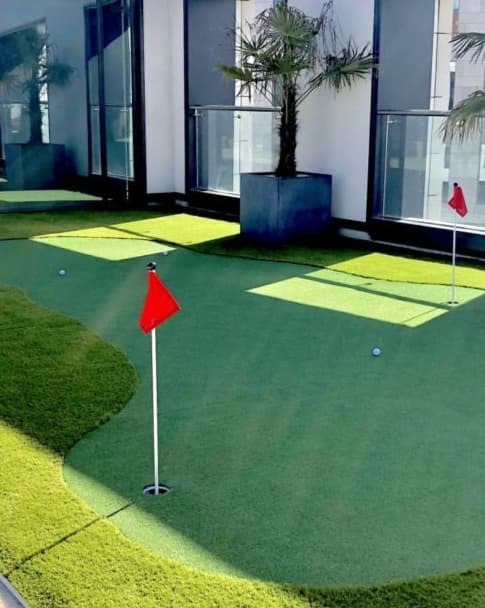
What Makes the Best Impact Screen for Your Golf Simulator?
If you’ve ever tried hitting a golf ball indoors, you know that without a solid impact screen, things can get messy—fast. The right screen turns your garage, spare room, or dedicated golf space into a believable course, while the wrong one? Well… expect dents in the wall, frustrated household members, and interrupted practice sessions. Beyond "it stops the ball," there are a lot of details that define a truly great golf simulator impact screen.
Golf balls can fly at speeds exceeding 150 mph, and repeated strikes add up. Durability is not negotiable for anyone who plans to practice regularly. The best screens use tightly woven polyester or multi-layer fabrics specifically engineered for impact absorption.
Single-layer screens are wallet-friendly and lightweight, which is fine for casual use. But if you practice often or have a high swing speed, multi-layer or reinforced screens are worth the investment — they resist tearing, reduce stretch, and often lower rebound. Think of it as buying a workhorse rather than a cheap toy.
Look for reinforced hems, grommets, and stitched edges. These seemingly small details dramatically improve longevity, especially if you mount the screen on a frame or tension system. Frayed edges are one of the main reasons cheap screens fail early.
Your impact screen doubles as the projector surface. If the image is dull, grainy, or uneven, the whole simulator experience suffers. A great screen offers a smooth, uniform surface with high reflectivity and accurate color reproduction so virtual greens and fairways look lifelike.
Too much texture causes pixel distortion; too little reflectivity makes images look washed out. The ideal balance yields sharp details even in well-lit rooms and helps your launch monitor’s camera or sensors pick up ball flight visuals more reliably.
One thing people often underestimate is sound. Cheap nets sound like a drum; premium impact screens often include sound-dampening layers or softer inner fabrics that absorb the shock and reduce the “thud.” If you’re in a shared home, apartment, or late-night practice scenario, quieter hits are a game-changer.
Measure your room carefully. Bigger isn’t always better; an oversized screen can wrinkle or sag, causing image distortion and inaccurate ball tracking. Match the aspect ratio to your projector: 4:3 for classic setups, 16:9 for widescreen feel. Also plan for hitting distance and clearance behind the screen for safe ball deceleration.
Easy installation matters. Screens with grommets, Velcro edges, or frame-compatible designs save time and keep tension even. A taut screen produces a better image and reduces unnecessary wear.
Not all projection screens are created equal. Generic projector screens are not engineered to stop high-velocity golf balls; they can cause dangerous ricochets. A purpose-built retractable impact screen absorbs energy and minimizes rebound. Position the screen with adequate clearance behind it and avoid hard surfaces directly behind the screen to reduce risk.
Think beyond the initial price. How easy is the screen to clean? Can you replace it without rebuilding the entire enclosure? Premium screens may cost more up front but often offer better cost per use. Frequent players will save money (and headaches) over time by choosing higher-quality materials.
If you're outfitting a home garage, a mid-range, quiet, multi-layer screen may be ideal. For a commercial facility or retail golf studio where uptime and heavy usage matter, opt for pro-grade impact fabrics with reinforced mounting systems and serviceable parts. The use case should guide your choice, not just price tags.
The best impact screen for your golf simulator balances toughness, image clarity, noise control, correct sizing, and safety. For casual users, a well-made mid-range screen will offer many years of reliable practice. For serious players or commercial setups, invest in pro-grade multi-layer options and professional mounting. In short: measure your space, match the screen to your projector and usage, and prioritize safety and long-term value. Do that, and your indoor rounds will start feeling a whole lot closer to the real course.
Pro tip: add a small test session after installation — hit a variety of clubs and check image quality, ball rebound, and noise. That quick trial will tell you more than specs on a product page.